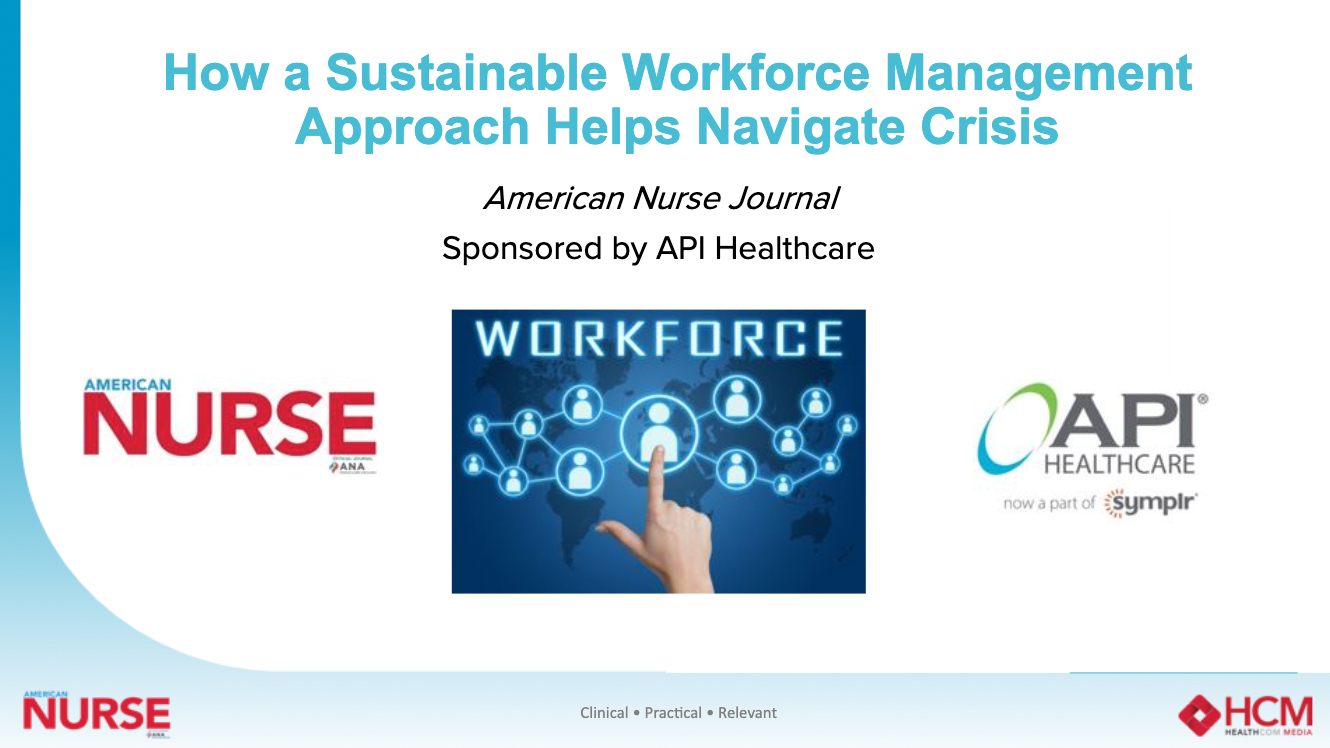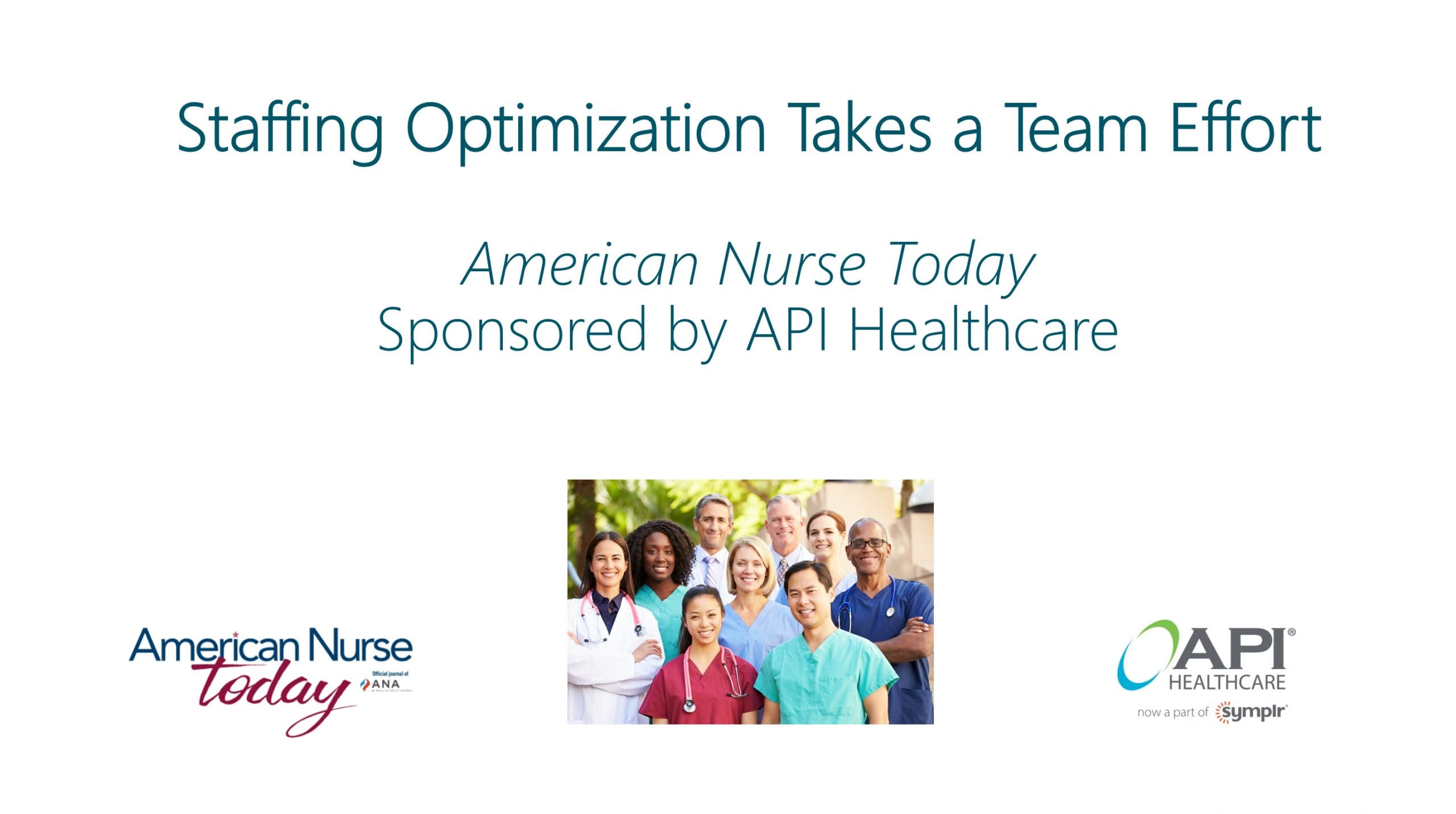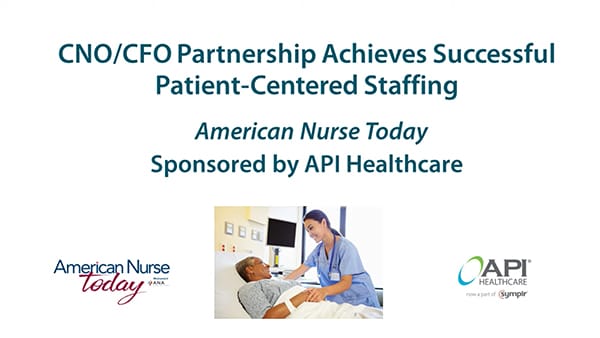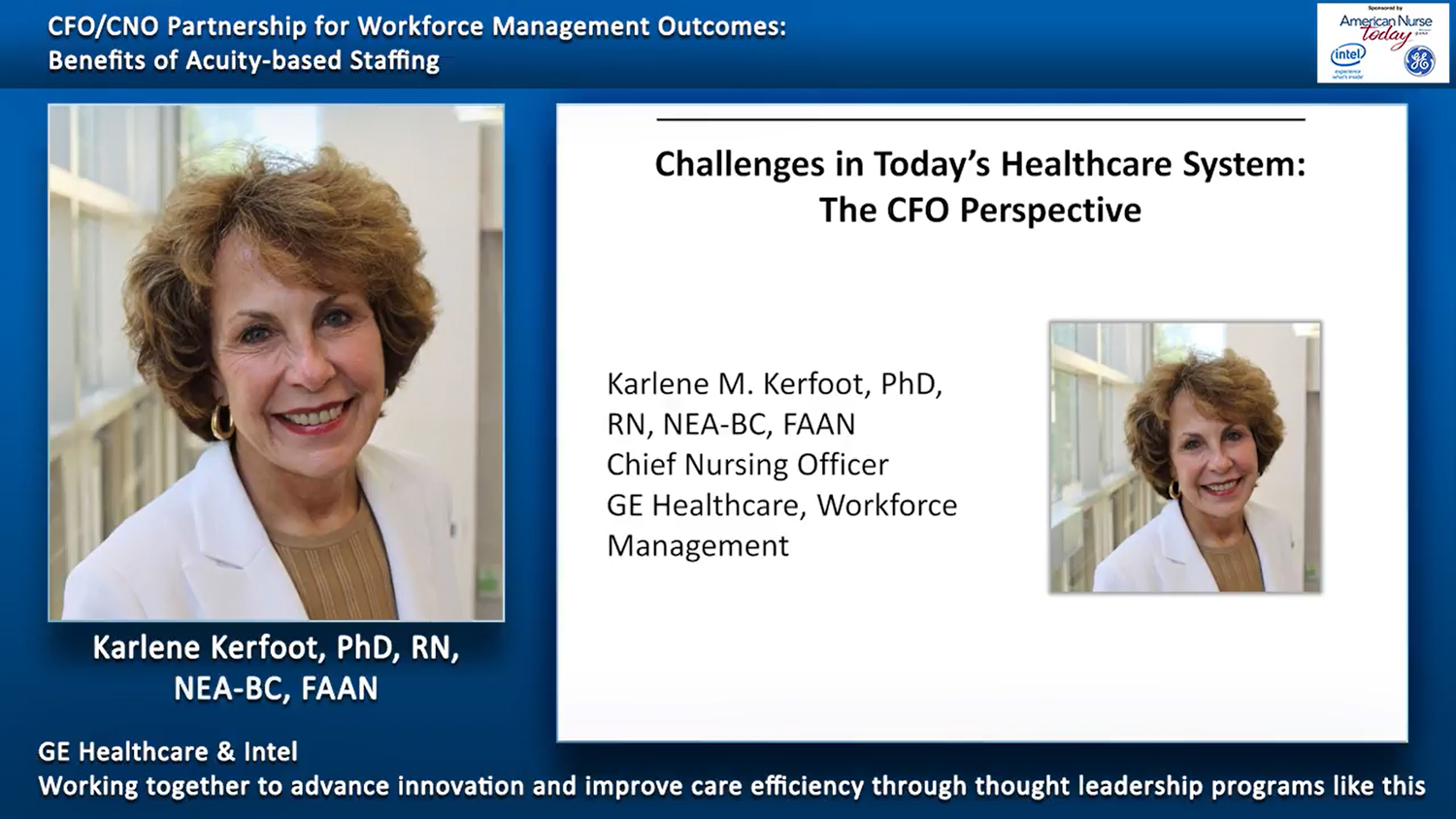How to transform data into effective staffing.
Takeaways:
- Many sources of healthcare system data influence staffing outcomes.
- Nurses—especially nurse executives—can help other leaders in their organization understand the impact on financial, operational, and clinical imperatives driven by a data-driven workforce management approach.
- Excellence in staffing begins with information about the patient, which is then integrated with information about nurse competencies and environmental factors.
Editor’s note: This is an excerpt from an upcoming toolkit on workforce management. Watch for more information on a workforce management webinar that’s coming in June.
The words of the Ancient Mariner in Samuel Taylor Coleridge’s poem “The Rime of the Ancient Mariner” convey exactly where we are with data-driven staffing today: “Water, water, everywhere…nor any drop to drink.” Healthcare is awash with data, but it’s not being transformed into information for real-time, patient-centered staffing decisions.
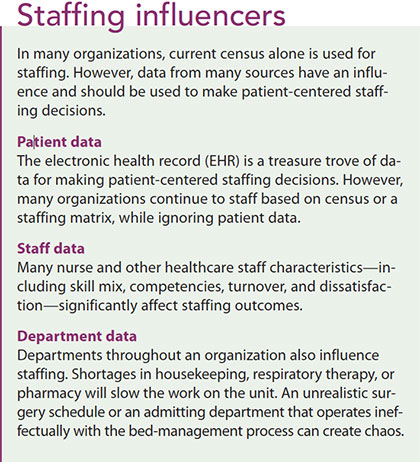

Many sources of healthcare system data influence staffing outcomes, and the person accountable for staffing rarely has access to all of it. (See Staffing influencers.) But even if they did, they wouldn’t be able to turn it into information for immediate staffing decisions. So instead, the various responsible parties look at staffing from many frames of reference and use opinion rather than data to make decisions. Executives, chief nursing officers, nurses in staffing roles, and frontline staff should all be looking at the same information and agree on the conclusions the data provide.
Make data a priority
In the age of evidence-based medicine and nursing, staffing based on data about the personalized needs of patients just makes sense. We set ourselves up for failure in the quest to meet quality indicators if we can’t correctly assess those needs and appropriately match staff and patients. As the healthcare professionals most familiar with the impact of data-driven staffing and staffing outcomes, nurses—especially nurse executives—can help other leaders in their organization understand the impact on financial, operational, and clinical imperatives driven by a data-driven workforce management approach. Here’s how you can begin the journey.
Build an interdisciplinary business case. Work with the chief financial officer and colleagues from other disciplines to build a business case for patient-driven staffing. Patient dissatisfaction scores and poor patient outcomes, which are directly related to inaccurate staffing, create lost revenue in an era of value-based purchasing. And nurse satisfaction affects patient satisfaction. Use the well-researched factors that link nurse staffing and quality care to build a business case with colleagues and organization leaders.
Champion the integration of patient care data into staffing decisions. Make your organization aware of the wealth of patient information available in the electronic health record (EHR). It’s the source of truth about patient need and acuity. And because most healthcare systems use a single EHR, staffing based on patient need can be implemented system-wide. Why implement acuity systems based on opinion when you can assess acuity directly from the EHR?
Tap into knowledge from other departments. Staffing doesn’t happen on individual units. Factors from other departments and across the healthcare system can lead to success or failure. Innovations, such as “command centers” that integrate central resource scheduling for all departments, are in place in many organizations. These centers look at input from a variety of resources to improve staffing and scheduling. A collaborative system strengthens the effectiveness of the staffing processes.
Let research and evidence guide you. Published and locally available data and evidence, including information from patient acuity systems, are available to support a staffing initiative based on patients’ documented needs and nurse characteristics. Work with clinically and analytically talented people to develop staffing processes based on this data.


The time has come
Now is the time to move to data-driven staffing based on patient need. Nurses can help take their organizations and colleagues along so that everyone is committed to this goal. Changing long-held perceptions within nursing and healthcare organizations can be a challenge, but traditional resistance to patient-centered staffing is no longer valid in the face of data-driven acuity systems. EHR documentation can remedy human error and system flaws through retrospective audits. In addition, prospectively assigning nurses based on the actual hours of care needed versus an average creates staffing precision.
Many nurses leave healthcare organizations because of perceived or actual staffing assignment inequity. Technology creates assignment visibility and provides the opportunity to document the assignment of complex patients over a defined time so that a break from intense care is based on data.
With technology that provides data-driven support from the EHR for patient-centered staffing, we can improve patient outcomes, increase nurse satisfaction, and positively influence financial, clinical, and operational outcomes of healthcare organizations. The time is now for nursing to take the lead to make a data-driven workforce management approach a priority.
The authors work at API Healthcare. Karlene M. Kerfoot is the chief nursing officer and Patricia Baran is the commercial leader.
Selected references
Lin H. Revisiting the relationship between nurse staffing and quality of care in nursing homes: An instrumental variables approach. J Health Econ. 2014;37:13-24.
Needleman J, Buerhaus PI, Stewart M, Zelevinsky K, Mattke S. Nurse staffing in hospitals: Is there a business case for quality? Health Aff (Millwood). 2006;25(1):204-11.
O’Keeffe M. Practical steps for applying acuity-based staffing. Amer Nurse Today. 2016;11(19):30-4.
Test Your Knowledge
Oops! We could not locate your form.




